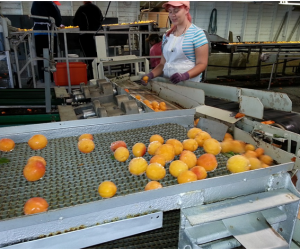Injuries are common in the food and drink industry and they tend to be related to kitchen accidents and manual lifting. In fact, over 30% of injuries that are formally reported to the HSE, are back related manual handling incidents, often with heavy objects.
The main causes of food and drink industry injuries
The top five problems are:
1. The incorrect stacking and unloading of sacks, crates and boxes – which can be mitigated by using the correct sack tip equipment.
2. Using incorrect handling techniques to handle heavy kegs, casks and drink crates.
3. Pushing wheeled trolleys or oven racks.
4. Packing food products.
5. Actual kitchen activities – such as jointing, boning and cutting meat.
Knowledge of these five areas makes it easier to carry out risk assessments in order to lessen the danger of these incidents occurring. They also provide a focus for management activity.
Managing the risks
Once businesses have identified the main risk areas, they can pinpoint activities in their operation that are likely to cause serious problems, such as repetitive or heavy lifting. Find out more at: http://aptech.uk.com.
Analysis of each task can then be carried out to a detailed level to ascertain which factors will create the risk. From this point, mitigating factors can be put in place where possible. These could include automation, bulk handling, powered trucks or other equipment – https://www.foodmanufacture.co.uk/Article/2014/05/15/Maintenance-and-cleaning-biggest-cause-of-food-factory-accidents.
Mechanisation is preferable, but where it cannot be implemented, other injury-reducing methods should be used, such as lessening the weight of boxes, improving the design of work stations, rotating jobs and introducing training. Ongoing management of processes must also occur to ensure that they are robust and cover all necessary work activities. Solid workstation management and supervision must ensure that they are adhered to, with regular and high-quality training provided to all staff.
With a consistent approach to safety at work, regular review and improvement of processes, investment in equipment that can reduce injuries and optimisation of work spaces, a safe and healthy working culture can be created. When everyone feels that they have ownership in the culture, it can be maintained and supported for everyone’s benefit, and for an excellent safety record. This helps to build a strong business, by attracting customers and maintaining high performance for maximum profits.






